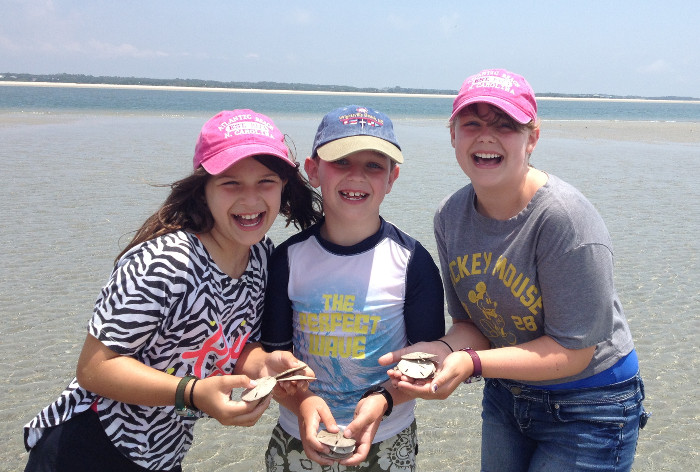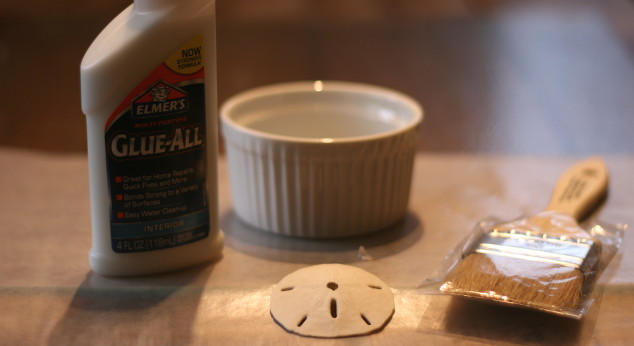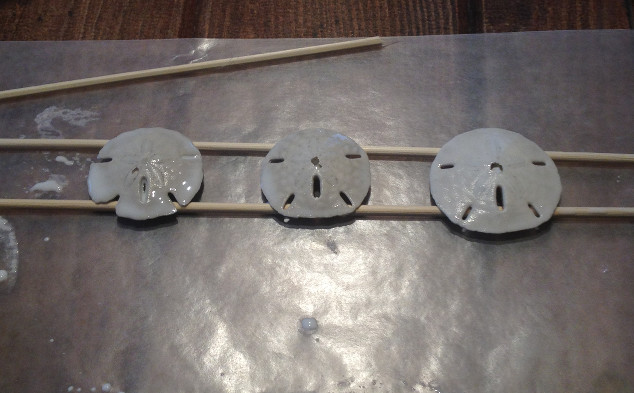how to clean sand dollars with hydrogen peroxide

Last month, we published a post on Southern Girl Travel entitled North Carolina's Last Best Place.
It was about a visit to Sand Dollar Island we made back in June. That post has become one of our most popular ever, and Sand Dollar Island has become one of our new favorite spots around Beaufort.
We don't seem to be alone, either, as we have heard that it has become a hot ticket for Island Ferry Adventures.
We're awfully glad of that, too. After the destruction the National Park Service wrought on Carteret County's local businesses with its ferry service changes, it's nice to see a local ferry service doing well.

Like many, if not most, visitors to Sand Dollar Island, we came away with dozens of sand dollars in great shape.
But, as anyone who has ever found a whole sand dollar knows, they are extremely fragile.

How should you preserve sand dollars so they can be around to beautify your home and bring back memories of the time that you found them?
It's actually easy.
We've been successful in the past with a simple 3-step process for preserving sand dollars. We'll detail those steps in just a moment.
But first, let's answer a question that I was relatively unsure of until recently:
What exactly is a sand dollar?
Some years ago Jennifer and I were visiting Cape Lookout and swimming just off the beach in the Bight. In about four feet of water we keep kicking into huge round objects that turned out to be live sand dollars. This was the first time we had ever come across live ones and we were having a ball.
Some of these sand dollars must have been six to eight inches across, and they were covered in a soft slimey fur.
Before then I was vaguely aware that sand dollars were creatures, but I had never really given it any thought. Like most of what we find during a stroll along our beaches, those things we know as sand dollars were once living creatures.
Sand dollars are actually the bleached out skeleton-like remains (often called "tests" by those in the know) of a creature from a family of creatures known as Clypeasteroida, relatives of the star fish and the sea urchin.
When they are alive, sand dollars are covered with soft colored spines – most of the ones we see around here are a bit maroon colored. When they die and are washed ashore the spines disappear and the shell, or test, is bleached white in the sun and becomes quite fragile, which is why whole ones are such a rare and fun find.
A real-time video of a live sand dollar in action
Sand dollars like to live in sandy ocean bottoms, with many grouping fairly close to shore in several feet of water.
They also tend to congregate by the dozens, if not hundreds, in several square yards.
Another interesting video of a live sand dollar
Remember, sand dollars that are not white or that seem to be moving are alive, please don't take those home!
Sand dollar pieces are often easy to find along North Carolina's beaches. Some of the larger pieces are nice to keep themselves. But, once you find a few whole ones (or dozens, like you are likely to on Sand Dollar Island), you'll quickly discover how fragile they are.
Here are those three steps we follow to preserve sand dollars as a keepsake or decoration:
1. Clean: get sand dollar clean and mostly free from excess sand by soaking in fresh water for a few hours…change the water out a few times as it discolors.
2. Bleach: if you would like the sand dollars to appear whiter, soak them in a bleach and water solution – something around 1:3 – for just a few minutes as the bleach will begin to dissolve the sand dollar. We normally find this step unnecessary as the sun seems to do all the bleaching required. A sand dollar that is too white looks a little fake.
3. Paint: (this is the key part in the process) paint the sand dollar with a 1:1 mixture of Elmer's white glue and water.

Sounds easy, doesn't it?
It is!
We lay out some wax paper on a kitchen counter. Gather a few toothpicks, wood skewers, chopsticks or something to raise the sand dollars off the surface slightly so they can dry better.
Then do your cleaning, bleaching (if you like), and drying. We mix up the glue/water solution in a ramekin and use a cheap ($1.00 or so) paint brush to brush a few coats of the solution onto both sides of the sand dollar.

After they dry for a few hours, check them out, and you might want to add an extra coat or two or flip them over and add an extra coat to the bottom, and let dry.

This will whiten them just slightly, give them a little shine, and while they will still be delicate, they shouldn't fall apart on you.
Where can you find out a little more about sand dollars?
Wikipedia has an extensive entry on sand dollars.
California's famous Monterey Bay Aquarium has an interesting post on sand dollars as well.
While we haven't been able to find a single book dedicated to North Carolina's sand dollars, we have found several larger guides on the coast that do have information on sand dollars:
Nature Guide to the Carolina Coast: Common Birds, Crabs, Shells, Fish, and other Entities of the Coastal Environment (2nd edition)
Seacoast Life: An Ecological Guide to Natural Seashore Communities in North Carolina
Both of the book links above are affiliate links. If you purchase items through these links, we will earn a small commission that will help us defer the cost of maintaining Bringing Home Beaufort. Thank you so much for reading!
And don't forget to:
Relax…you CAN get to Beaufort from here!
how to clean sand dollars with hydrogen peroxide
Source: http://bringinghomebeaufort.com/3-easy-steps-to-preserving-sand-dollars/
Posted by: blessingpristor.blogspot.com

0 Response to "how to clean sand dollars with hydrogen peroxide"
Post a Comment